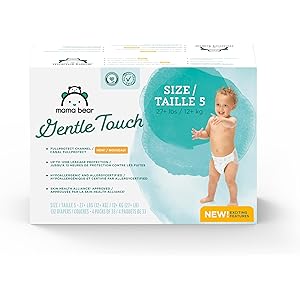Huggies Size 5 Diapers, Snug & Dry Baby Diapers, Size 5 (27+ lbs), 168 Count (6 Packs of 28), Packaging May Vary
$39.34 (as of October 13, 2025 17:48 GMT +00:00 - More infoProduct prices and availability are accurate as of the date/time indicated and are subject to change. Any price and availability information displayed on [relevant Amazon Site(s), as applicable] at the time of purchase will apply to the purchase of this product.)Understanding the 4 P’s of Obstetrics
The 4 P’s of obstetrics are a fundamental framework that helps healthcare professionals understand the dynamics of labor and delivery. These elements—Passenger, Passage, Powers, and Psyche—interact to influence the childbirth process. Each component plays a crucial role in determining the outcome of labor, making it essential for obstetricians and midwives to assess them thoroughly.
Passenger: The Role of the Fetus
The term “Passenger” refers to the fetus and the placenta. In obstetrics, understanding the size, position, and presentation of the fetus is vital. Factors such as fetal head circumference, fetal lie, and the presence of any anomalies can significantly affect labor. For instance, a fetus in a breech position may complicate delivery, necessitating alternative birthing methods. The health and well-being of the fetus are paramount, and continuous monitoring is essential during labor.
Passage: The Birth Canal
The “Passage” encompasses the birth canal, which includes the pelvis and soft tissues. The shape and size of the pelvis can influence the ease of delivery. Obstetricians assess the pelvic dimensions to predict potential complications during labor. Additionally, the condition of the cervix and vaginal tissues plays a critical role in the delivery process. A well-prepared birth canal facilitates smoother labor, while any abnormalities may require medical intervention.
Powers: The Forces of Labor
“Powers” refer to the uterine contractions that drive the labor process. These contractions are essential for dilating the cervix and pushing the fetus through the birth canal. The strength, frequency, and duration of contractions can vary significantly among women. Understanding these dynamics helps healthcare providers manage labor effectively. In some cases, interventions such as induction or augmentation may be necessary to enhance the effectiveness of contractions.
Psyche: The Psychological Aspect
The “Psyche” component highlights the emotional and psychological state of the mother during labor. A woman’s mental well-being can significantly impact her experience of childbirth. Factors such as anxiety, fear, and previous birth experiences can influence the labor process. Support from healthcare providers, family, and friends can help alleviate stress and promote a positive birthing experience. Techniques such as relaxation, breathing exercises, and continuous support are vital in addressing the psychological needs of the mother.
Interplay of the 4 P’s
The interaction between the 4 P’s of obstetrics is complex and dynamic. Each element affects the others, creating a unique labor experience for every woman. For instance, a larger fetus (Passenger) may require more powerful contractions (Powers) to navigate a narrower birth canal (Passage). Understanding these relationships allows healthcare providers to anticipate challenges and tailor their approach to each labor scenario, ensuring the best possible outcomes for both mother and baby.
Clinical Implications of the 4 P’s
In clinical practice, the 4 P’s of obstetrics serve as a guideline for assessing labor progress and making informed decisions. Regular evaluations of the Passenger, Passage, Powers, and Psyche can help identify potential complications early. This proactive approach enables healthcare providers to implement timely interventions, whether it be through pain management, surgical options, or emotional support, ultimately enhancing the safety and satisfaction of the birthing experience.
Educational Importance of the 4 P’s
Educating expectant parents about the 4 P’s of obstetrics can empower them during the childbirth process. Understanding how these elements interact can help parents make informed choices about their birth plans. Prenatal classes often cover these concepts, providing valuable insights into what to expect during labor. This knowledge can reduce anxiety and foster a sense of control, contributing to a more positive birthing experience.
Future Directions in Obstetrics
As research in obstetrics continues to evolve, the 4 P’s framework remains relevant. Innovations in technology and techniques are enhancing our understanding of how these components interact. Future studies may focus on personalized approaches to labor management, considering the unique characteristics of each woman. By integrating new findings with the established 4 P’s model, healthcare professionals can continue to improve maternal and fetal outcomes in childbirth.



